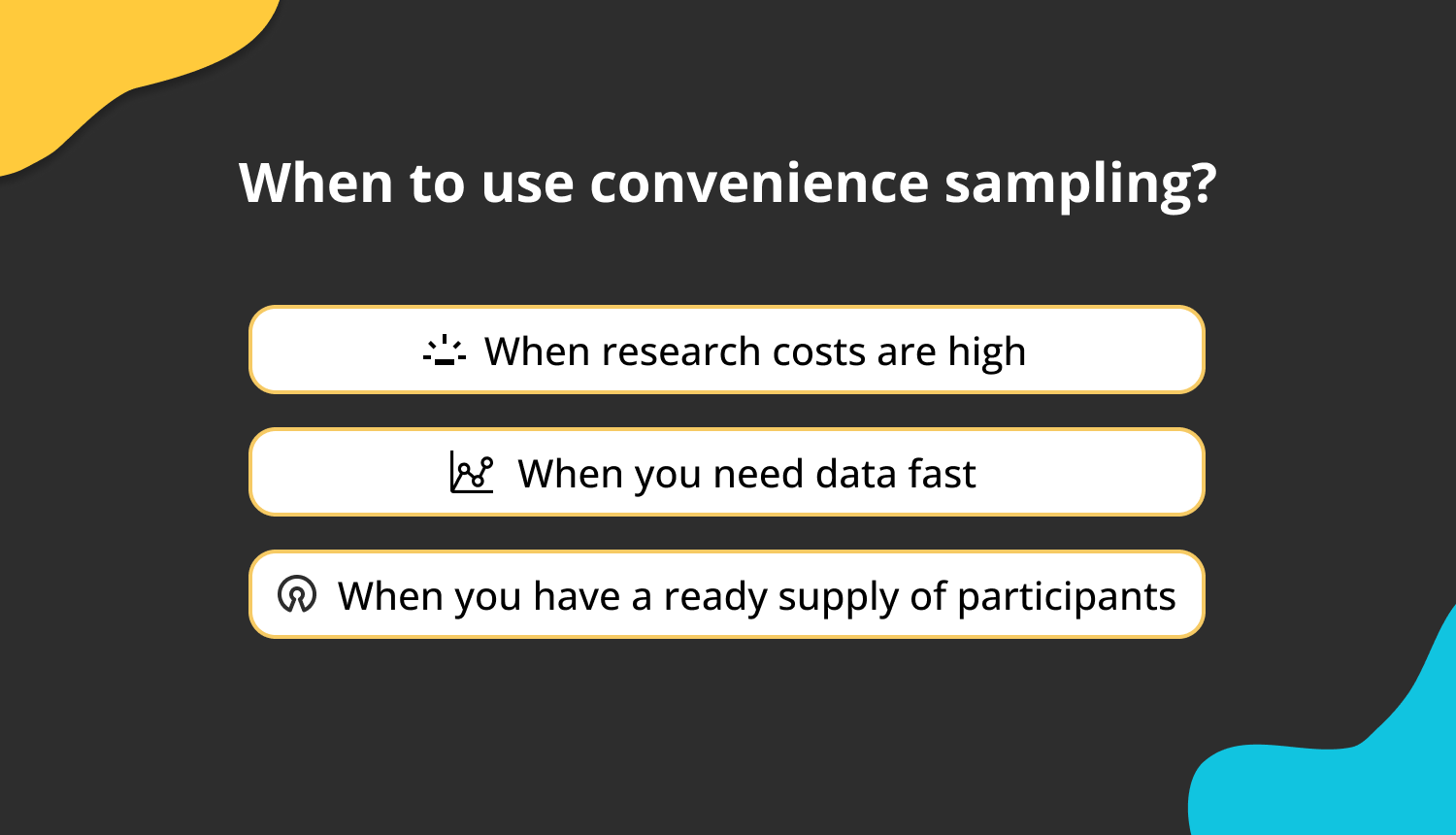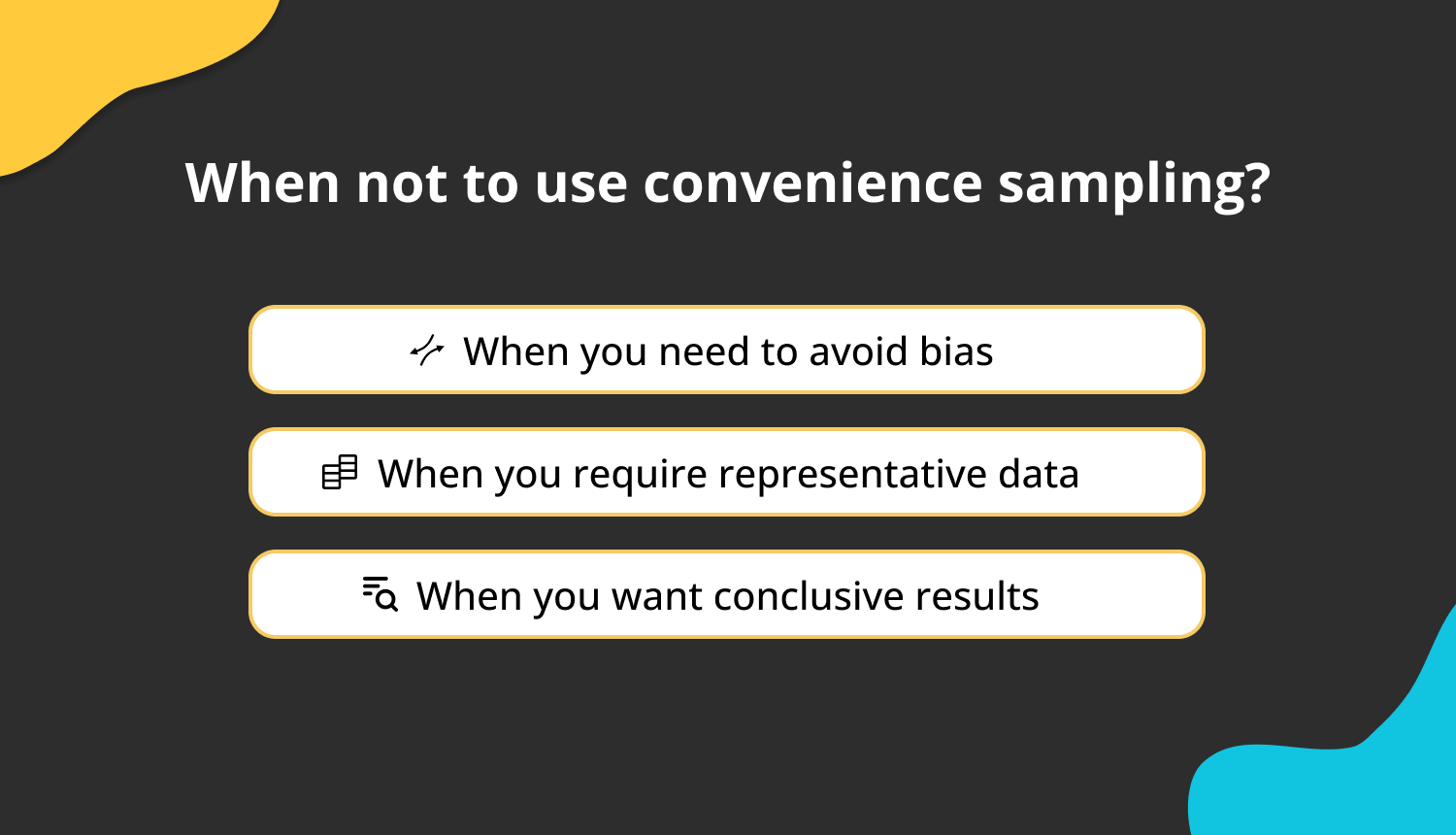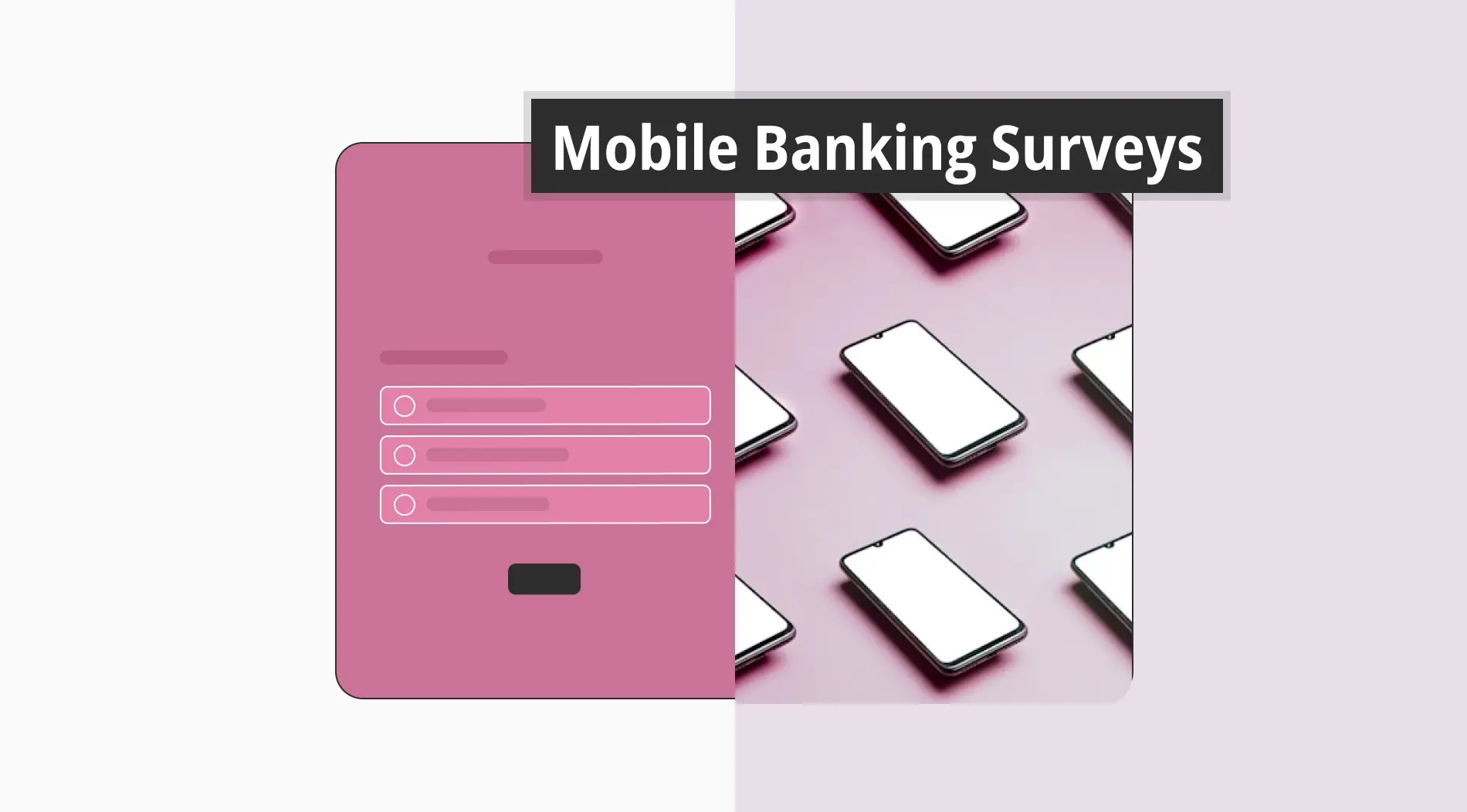There are many different helpful sampling methods. Finding the most appropriate sampling technique for your research allows you to conduct your research more effectively. Convenience sampling, one of the effective sampling types, is a simple and fast way of obtaining information.
Convenience sampling is a quick and easy method of data collection. Simple and uncomplicated are frequently a perfect combination. But it is critical to comprehend what it is to know when and when to use convenience sampling. This article will explain the definition, types of convenience sampling, and disadvantages and advantages.
The definition of convenience sampling
Convenience sampling is a non-probability sampling technique where researchers use simple subjects to get in touch with and get their participants from. Researchers in the most accessible locations locate participants, and there are no requirements for inclusion. Other names for convenience sampling are opportunity sampling and availability sampling.
Convenience sampling is a method researchers use to gather market research data from a pool of respondents who are easily accessible. It is the most prevalent sampling method because it is quick, simple, and affordable. When other sampling techniques are difficult or impractical to use due to constraints on time, money, or other factors, convenience sampling is frequently used.
This sampling method enables researchers to subjectively choose participants at random who are open to being approached and participating in the study rather than requiring them to be randomly selected based on predetermined criteria. So, your sample is readily available wherever you are.
Convenience sampling is a technique for gathering data from an audience in which researchers choose participants using any method at their disposal. In this sample, participants are not chosen randomly based on some criteria and do not have an equal chance of being selected.
What is convenience sampling in psychology?
Researchers must evaluate the study’s content and structure to choose the best sampling method. By doing this, guidelines for what standards to use when selecting participants for the study are provided. Many studies in psychology call for participants with specific experiences, symptoms, or disorders related to the subject matter or phenomenon being investigated. The sample of participants must accurately reflect the target population for the study to be reliable and valid.
It is common for psychology research to use undergraduates as the major of its participants, a practice known as convenience sampling. However, generalizing results from psychology undergraduates to the adult population may be unfair, given that a significant portion will be young adults.
What is convenience sampling in research methodology?
Convenience sampling is a technique that enables researchers from the need to study every person in a population to conclude the population from data from a subset of that population. Convenience sampling is a particular kind of non-probability sampling technique that relies on data collection from population members who are conveniently available to participate in the study.
When to use convenience sampling?

When the availability of participants, speed, and minimizing research costs take precedence over using precise sampling techniques, convenience sampling is practical because even a little information is better than no information. Here are some cases when using convenience sampling.
- When research costs are high: Pilot tests are the best candidates for convenience sampling. You can use it when testing your research protocols and survey instruments. Before investing more money to get a representative sample, it is an affordable way to work out any issues with your study. So, researchers can use this sampling when the research cost is high.
- When you need data fast: Use convenience sampling when there is a limited amount of time or when the data you need can be retained quickly. Compared to other techniques like purposive sampling, the rules for gathering sample components are the simplest.
- When you have a ready supply of participants: You can use this sampling when you need feedback or input to help you decide or test an idea. Most convenience sampling takes into account the current population. The researchers have easy access to samples. They don’t have to move around a lot when gathering data.
When not to use convenience sampling?

Convenience sampling can be a quick and straightforward way to gather data. Still, it also has biases and limitations that may affect how reliable and usable the results are in the real world. It is better not to use this method, which is effective when used in the right place, in the following situations.
- When you need to avoid bias: Avoid using convenience sampling when your research process has accounted for potential sampling bias.
- When you require representative data: When you need to ensure that your sample accurately represents your target audience, avoid using convenience sampling. You can not be sure that your sample is representative of your entire audience when convenience sampling is used because the focus is on obtaining research participants quickly and easily.
- When you want conclusive results: When others must verify your findings to be sure they are accurate, avoid using convenience sampling. There are no rules necessary for this sampling to function.
Convenience sampling examples
One of the most common examples of convenience sampling is using student volunteers as a subject for research. To choose ten students from a class, select the first ten people on the list. In this way, the researcher can reach the participants more quickly and easily.
Another classic example is the “Pepsi Challenge.” The Pepsi Challenge began as a blind taste in public locations like stores or malls. Participants sample “Coca-Cola” and “Pepsi” from unmarked cups before expressing a preference.
Does convenience sampling results in sampling bias?
Convenience samples are very susceptible to bias in research. It never produces a statistically balanced population sample because the researcher chooses it based on convenience rather than equal probability. As a result, sampling bias develops.
Researchers are subjective in selecting their participants. This results in observer bias. Participants are frequently provided incentives to complete surveys. They might give unreliable or false information if receiving rewards is their only motivation. This results in response bias, social desirability, and self-selection bias.
Advantages and disadvantages of convenience sampling
Businesses can use this sampling method to change their brand or products. It is a great way to determine whether the target market has a positive or negative opinion of your brand or business. Although this sampling method has many advantages, it has also disadvantages.
Advantages of convenience sampling:
- It makes data collection more convenient: Many researchers use this technique for quick data collection when time is of the essence. In contrast to other sampling methods, the rules for collecting the sample’s constituent parts are the simplest. Data collection is quick because of this simplicity.
- It is an inexpensive method to create samples: Compared to other samplings, such as cluster sampling, this sampling, the time and money invested in other probability sampling techniques are substantial. It enables scientists to quickly and cheaply produce a more significant number of samples.
- It has fewer rules to follow: It is a flexible process that involves few rules. You don’t have to exert yourself by overcalculating sample fractions or ideal sizes. You have complete discretion over how you select your sample from the population.
Disadvantages of convenience sampling:
- Sampling bias: Sampling bias may occur when participants are not randomly selected from a larger population. This suggests that the sample does not represent the entire population and that the results may not hold for other groups.
- Limited external validity: It might not have good external validity due to potential bias in the sampling process and a lack of diversity. The results may not apply to various regions or populations.
- Lack of variety: The sample may lack variety because the researcher may select participants who are simple to research and have similar characteristics. The range of perspectives and life experiences the sample represents may be reduced.
Key points to take away
In conclusion, a convenience sample can be beneficial in some circumstances, but it is essential to be aware of any potential drawbacks and use it appropriately. Even though it has some advantages, such as being quick, inexpensive, and easy, it also has a lot of research issues like sample bias.
Convenience sampling can save you time and money when you have a large sample size. When selecting a sampling technique such as simple random sampling, or stratified sampling, researchers should always consider the population, the research questions, and the study's design.
Sena is a content writer at forms.app. She likes to read and write articles on different topics. Sena also likes to learn about different cultures and travel. She likes to study and learn different languages. Her specialty is linguistics, surveys, survey questions, and sampling methods.



